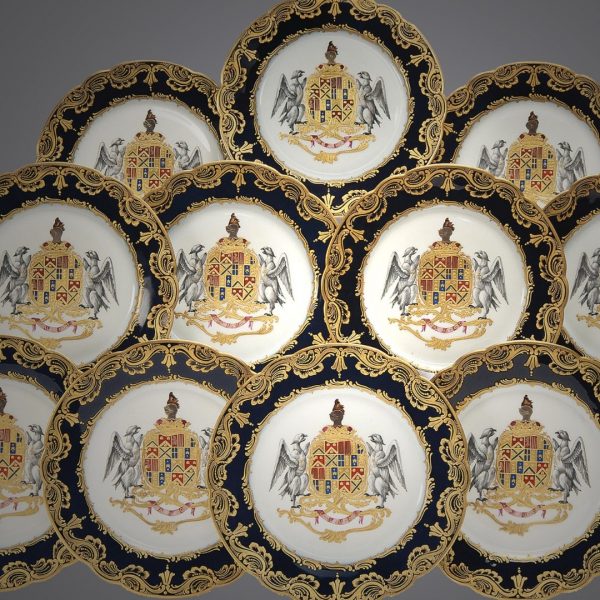Konigliche Porzellan-Manufaktur (KPM)
Une belle plaque en porcelaine de KPM
£12,000
A KPM Porcelain Plaque Depicting The Three Eldest Children of Charles I, After The Painting By Sir Anthony van Dyck.The finely painted rectangular plaque...
Dimensions
Hauteur : 61 cm (25 in)Width: 51 cm (21 in)
Depth: 7.5 cm (3 in)
Description
A KPM Porcelain Plaque Depicting The Three Eldest Children of Charles I, After The Painting By Sir Anthony van Dyck.The finely painted rectangular plaque set within a giltwood and moulded frame with a red velvet slip.
The plaque illustrates the three eldest children of King Charles I of England, after a 1635 painting by Sir Anthony van Dyck now in the Royal Collection at Windsor Castle. The children are portrayed standing in front of richly embroidered drapes, in an interior setting, with two spaniels at their feet. They are from left to right: King Charles II (1630-1685) when Prince of Wales, King James II and VII (1633-1701) when Duke of York, and Mary, Princess of Orange (1631-1660).
Date
Circa 1890
Origine
German
Moyen
Porcelaine
Signature
Stamped to the reverse with KPM and sceptre mark.
Founded in Berlin in 1750 ‚‘KPM‚’ or ‘Koenigliche Porzellan-Manufaktur’ acquired its name and Royal patronage when the Prussian king, Frederick the Great, purchased the manufactory in 1760.
Its distinguished trademark from then on became the royal blue sceptre, which is stamped (painted prior to 1837) on every piece. All painted pieces produced by KPM are signed by the painter.
The complicated and exacting process of painting on porcelain became very popular in the mid to late nineteenth century. Drawing inspiration from old master portraits and genre scenes, artists were able to achieve incredible images embued with a luminous beauty through the translucent quality of the porcelain.
KPM porcelain represented the height of technical and artistic achievement during this period and large plaques particularly signed examples have become rare and highly sought after.








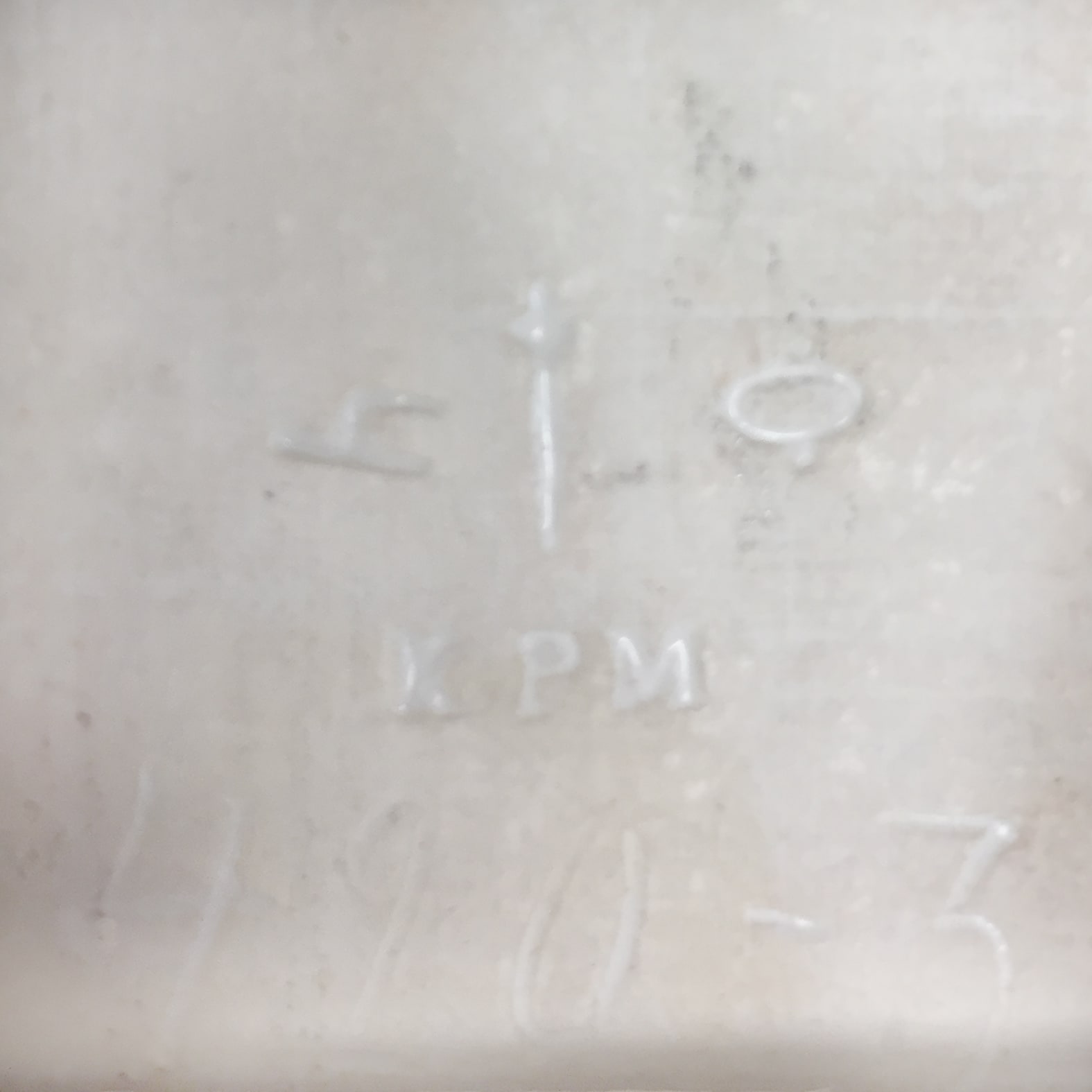

 Imprimer
Imprimer